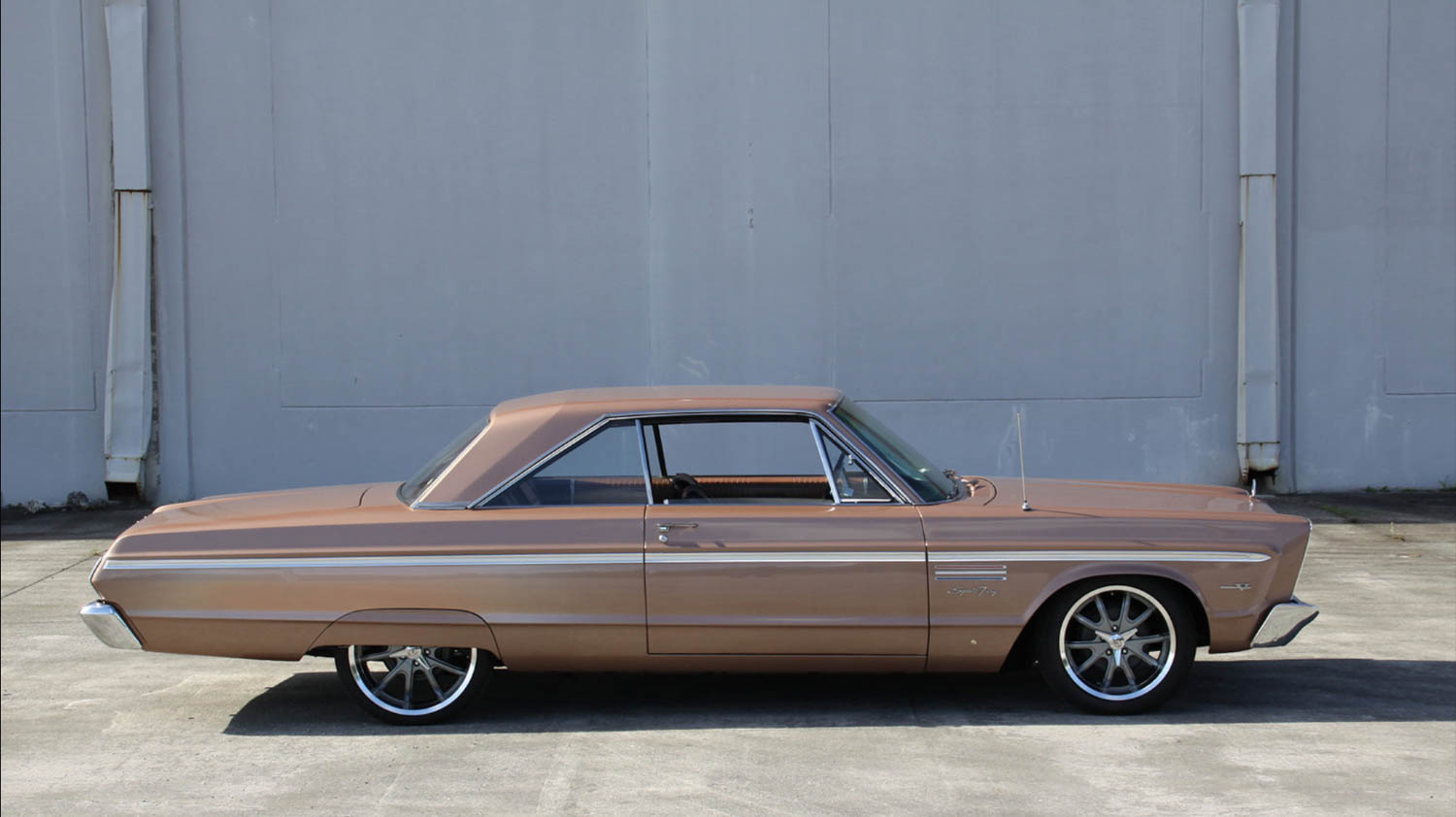The Plymouth Fury is the last affordable ’60s Mopar
There are no cheap MOPAR muscle cars anymore, much to the dismay of anyone who remembers flipping through pages of classified ads and rejecting $2500 Plymouth Road Runners as “too expensive.” There is one vein of Mopar ore yet unmined, though: the 1960s C-body full-size models. The biggest cars in the Chrysler stable have some of the smallest prices, and with average values ranging from $6700 for base models to $13,500 for higher trims, the 1965–68 Plymouth Fury is one of the most affordable machines of the muscle-car era.
The Fury had a long life, starting in 1956 and morphing in size and platform multiple times until its final run for 1989. By the mid-1960s, U.S. car buyers associated quality with size, rather than style, so Plymouth bosses reined in the fins and high compression ratios that defined earlier cars and moved the Fury from the mid-size B-body to the 119-inch-wheelbase C-body platform in the hope of stealing some customers from Chevrolet and Ford.



The 1965 Fury also split into several different trim levels, imaginatively named Fury I, Fury II, and Fury III. There were also a Sport Fury—available as a two-door hardtop or convertible—and a Fury wagon, which was even longer than the sedan. In 1966, Plymouth went after Ford’s LTD with the Fury VIP, which had wood trim and baroque badging. Nothing says luxury like a fancy badge.
Along with the increased length, 1965–68 Furys followed the Detroit trend of stacked headlights, a useful detail for identification in the wild. Aside from the headlights, the redesigned Plymouths played it safe, with restrained body lines and minimal trim. Engine options were also tame, starting with the 145-hp, 225-cubic-inch slant-six, painfully underwhelming in a 3700-pound car. Customers were happier with the 230-hp 318 V-8 and happier still with the big-block 383, available with two- or four-barrel carbs. The top of the line was the 365-hp 426 Street Wedge, offered in a street-friendly tune compared with the previous Fury Super Stock engines of 1963–64. (This is not the 426 Hemi, which never came in the Fury, but the precursor to the 440.)
If you end up with a 318-powered Fury, don’t expect it to be too furious. The 383, on the other hand, ran well enough for Car and Driver to paint it in 1966 as “tight as a tick, comfortable, and fast.” Of course, fast in 1966 was measured a little differently than it is now. Road tests of the 383 four-barrel have it running the quarter-mile in about 17 seconds, sprightly for a car the size of a city block.

The design aesthetic continued to follow the bigger-is-better ruling, and the restyled 1967 Fury looked even larger than the ’66, although the wheelbase remained the same. Another redesign in 1968 added a Fast Top roofline for the Fury III, a sporty, subtle fastback that only the Sport Fury and the luxury VIP offered previously. If you’re lost on how many combinations that makes, so are we, and so were the customers in 1968. Sales dropped, and Plymouth gave up on the VIP for 1969.
What does this mean for you, future Fury owner? Well, only a handful of Furys are investment-grade (1965 426 Street Wedge, 1965 Sport Fury Indy pace car convertible). But just because the Fury won’t work as your retirement plan doesn’t mean you shouldn’t consider one as a project car or daily driver. A 440/6 droptop Barracuda might be out of your price range, but with the money you save buying a Fury, you can pop on a trio of two-barrels and be the only six-pack full-size at the car show. Plus, you can fit a lot more friends in for the ride.
The article first appeared in Hagerty Drivers Club magazine. Click here to subscribe to our magazine and join the club.

